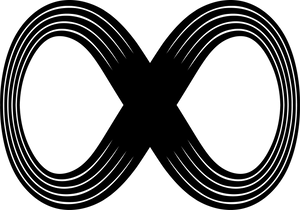The Ketogenic (Keto) diet is all the rage at the moment and with good reason. A recent article in the New Scientist reported that the Keto diet was scientifically shown to reduce migraines in less than a month . Another study attributed the reversal of Type 2 diabetes to a low carbohydrate diet . Another to a reduction in cardiovascular risk factors . And yet another study, suggested that the Keto diet improves gut health and enhances cognition . The therapeutic benefits of the Ketogenic diet were established in the 1920s as an effective treatment for childhood epilepsy, and there seems to be no end to the beneficial effects of the ketogenic diet with studies now being conducted on how the therapeutic ketogenic diet effects cancer and auto-immune diseases.

So what is the Keto diet?
The Keto diet is all about eating high good fat, moderate protein and low carb. Depending on the purposes of the diet, there are different versions of it that one can follow. The therapeutic keto diet, used to manage epilepsy for instance, is very carbohydrate restrictive, only allowing 20g or less of carbohydrate a day. While the nutritional Keto diet has shown to offer benefits such as reduced inflammation, weight loss, enhanced concentration and focus, and increased energy on up to 50g of carbohydrates a day.
What happens to our body whilst we’re on a Keto diet?
By restricting carbohydrate intake, the body switches from using glucose for fuel, to energy derived from ketones. The body is said to be in ketosis at this stage. Ketones, it turns out, are a much more efficient fuel for the body, with fewer free radicals produced in the process, which is less ageing!
Ideally our bodies should be metabolically flexible enough to easily switch from burning glucose to burning fat, but with our modern carb-based diet, it can take time to switch. Sometimes it can take up to a few weeks before we are fully in ketosis. This is where the Keto flu and other side effects emerge on days two or three of eating Keto. These are normal when first starting out on the diet. Drinking lots of water, having an epsom salt bath or a sauna will help.
How does the nutritional Keto diet translate?
Generally on a nutritional Keto diet, one’s food makeup consists of 75% good fats, 15% protein and 5% carbohydrate, depending on your body composition and activity level. Because a large proportion of your calories is coming from fat and you’re eating low carb, you won’t be hungry as your blood sugar, and therefore insulin, aren’t spiked. Fat is very satiating. What is also interesting to note is that the Keto diet is not a high protein diet, but calls for moderate protein. What has been discovered is that consuming large amounts of protein can, in fact, turn into glucose, thus raising blood sugar.

What differentiates the Keto diet from the Atkins diet?
These two diets are often spoken about in the same breath, as in “it’s just another Atkins diet, isn't it?”. Well in actual fact, the Keto diet is markedly different. Where the Atkins had no restriction on protein, the Keto diet recommends moderate protein and while the Atkins didn't encourage vegetables, the Keto diet recommends non-starchy vegetables, such as spinach, kale, rocket, celery, fennel, cucumber and so on. The emphasis on good fats is also key, so virgin coconut, olive, and macadamia nut oils, avocado, nuts, seeds and 90%-100% dark chocolate are all great sources of healthy fats.
https://www.newscientist.com/article/2213394-ketogenic-diet-may-stop-migraines-by-changing-the-brains-fuel/ https://care.diabetesjournals.org/content/32/7/1147.long?utm_source=TrendMD&utm_medium=cpc&utm_campaign=Diabetes_Care_TrendMD_0 https://www.ncbi.nlm.nih.gov/pmc/articles/PMC4428290/?_escaped_fragment_=po=23.3333 https://www.ncbi.nlm.nih.gov/pubmed/25982560
A Typical Day’s Menu on the Keto Diet Breakfast:
Poached organic eggs on Cru8 Keto bread Lunch: Wild caught or organic salmon with asparagus, a herby green salad with avocado, dressed with an olive oil-based dressing Supper: Pistachio Basil Pesto with courgetti or shirataki noodles on a base of rocket Snacks: Small handful of activated almonds or a Cru8 Keto macaroon.
What to include What to avoid
The key really is to ensure you’re eating as low carb as possible and eating enough fat. You will get your carbs from vegetables. Cook your vegetables in coconut oil or ghee. Avoid any grains, legumes, or veg grown underground such as sweet potato. If you’re not dairy intolerant then you can add some full fat dairy, but I’m not a fan for its mucous creating effect. If you find that you’re hungry, have a spoonful of MCT oil which you can find in any health food store, half an avocado or a spoonful of almond butter.
Keto Cycling
If eating Keto all the time seems daunting, then Keto cycling could be something for you. This means that one day a week, you allow yourself a moderate carb day, so this might mean you add some fruit to your breakfast or some sweet potato to your lunchtime meal. It’s a matter of figuring out what works best for you and what you feel best on.
While the Keto diet may seem impossibly restrictive, once you wean yourself off the grains and sugar, have the necessary pantry/grocery items, like the good oils, MCT oil, almond butter, veggies, and good quality protein, then the diet can become a lifestyle that will bring multiple benefits. This may take a few weeks to a few months, but the effort is worth it as you start experiencing the benefits for yourself!

